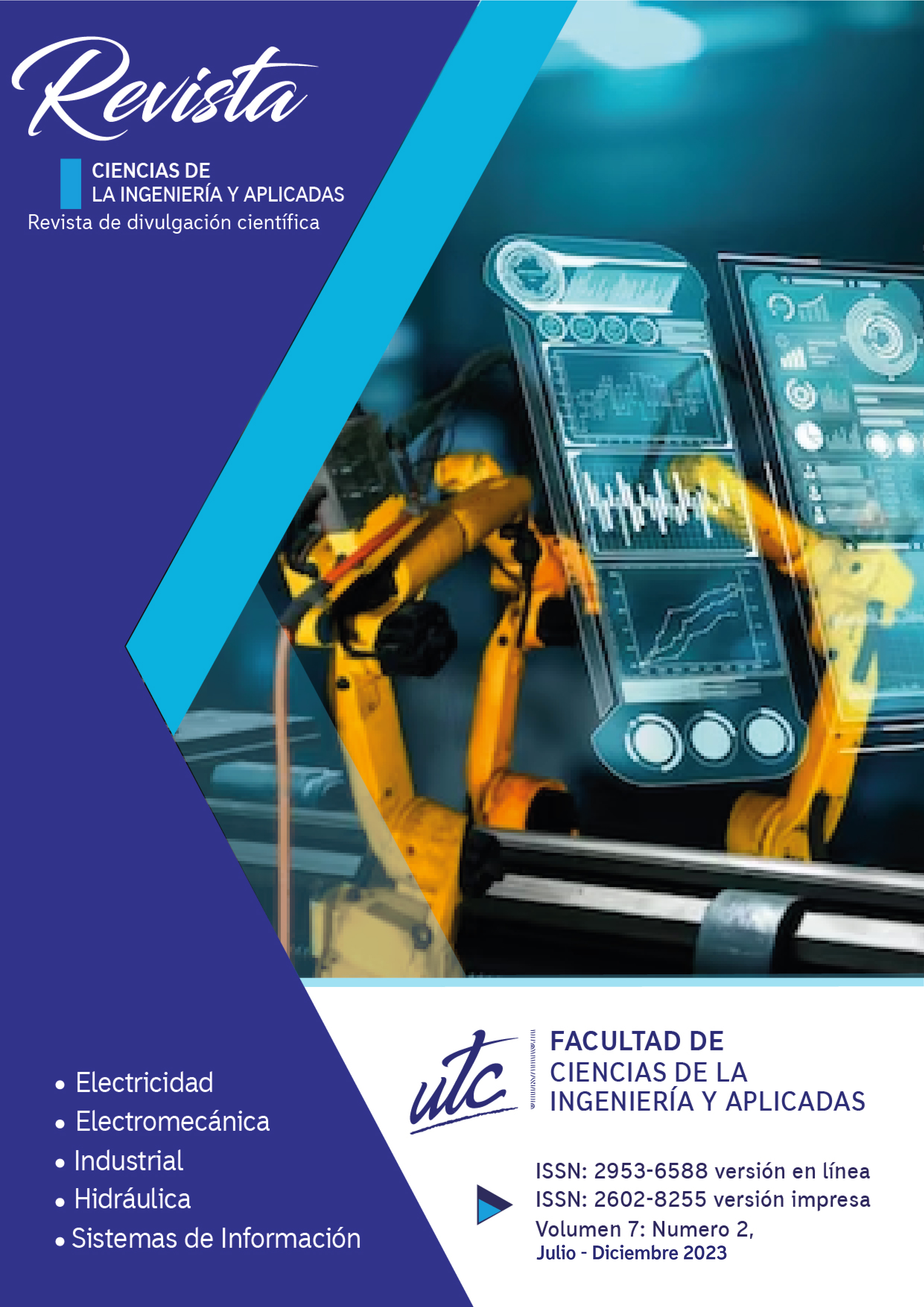Análisis metalográfico usando visión artificial: una revisión sistemática de la literatura
Resumen
El análisis metalográfico es una técnica que permite estudiar la microestructura de los metales y sus aleaciones, relacionada con sus propiedades químicas y mecánicas. La visión artificial es una disciplina que utiliza procesos computacionales para extraer información de las imágenes. En este artículo se presenta una revisión sistemática de la literatura sobre el uso de la visión artificial para el análisis metalográfico, siguiendo la metodología PRISMA. Se identificaron 50 artículos relevantes, publicados entre 2018 y 2023, que abordan diferentes aspectos del análisis metalográfico, como la detección de defectos, la clasificación de fases, la medición de tamaño de grano, la caracterización de inclusiones y la evaluación de la calidad superficial. Se analizaron los métodos, las técnicas y los resultados de los artículos, así como los desafíos y las oportunidades para la investigación futura. Se concluye que la visión artificial es una herramienta útil y prometedora para el análisis metalográfico, que ofrece ventajas como la automatización, la precisión, la rapidez y la reducción de costos.
Descargas
Citas
L. O. Freire, L. M. Navarrete, B. P. Corrales, and J. A. Porras, “Metallographic analysis of the percentage of carbon in the test tube based on artificial vision,” Smart Innovation, Systems and Technologies, vol. 213 SIST, p. 1 – 11, 2021, cited by: 0. [Online]. Available:
D. Cheng, W. Sha, Z. Xu, L. Huang, Y. Du, S. Tang, Y. Guo, Y.-C. Cao, and S. Cheng, “Computer vision analysis on material characterization images,” Advanced Intelligent Systems, vol. 4, 3 2022.
G. Fotos, A. Campbell, P. Murray, and E. Yakushina, “Deep learning enhanced watershed for microstructural analysis using a boundary class semantic segmentation,” Journal of Materials Science, vol. 58, p. 14390 – 14410, 2023, cited by: 0; All Open Access, Hybrid Gold Open Access. [Online]. Available:
M. Awd, S. Mu ̈nstermann, and F. Walther, “Effect of microstructural heterogeneity on fatigue strength predicted by reinforcement machine learning,” Fatigue and Fracture of Engineering Materials and Structures, vol. 45, pp. 3267–3287, 11 2022.
Y. Ai, S. Han, C. Lei, and J. Cheng, “The characteristics extraction of weld seam in the laser welding of dissimilar materials by different image segmentation methods,” Optics and Laser Technology, vol. 167, 2023, cited by: 0. [Online]. Available:
X. Fang, Q. Luo, B. Zhou, C. Li, and L. Tian, “Research progress of automated visual surface defect detection for industrial metal planar materials,” Sensors (Switzerland), vol. 20, pp. 1–35, 9 2020.
A.-I. Garcia-Moreno, “Automatic quantification of porosity using an intelligent classifier,” INTERNATIONAL JOURNAL OF ADVANCED MANUFACTURING TECHNOLOGY, vol. 105, pp. 1883–1899, 12 2019.
E. Belin and V. Boucher, “An imaging system based on laser optical feedback for fog vision applications,” vol. 7088, 2008, cited by: 2. [Online]. Available:
H. Eckart, “5 quantitative description of microstructures by image analysis.”
E. A. Holm, R. Cohn, N. Gao, A. R. Kitahara, T. P. Matson, B. Lei, and S. R. Yarasi, “Overview: Computer vision and machine learning for microstructural characterization and analysis,” Metallurgical and Materials Transactions A: Physical Metallurgy and Materials Science, vol. 51, pp. 5985–5999, 12 2020.
F. Raudies and H. Neumann, “A neural model of the temporal dynamics of figure-ground segregation in motion perception,” Neural Networks, vol. 23, p. 160 – 176, 2010, cited by: 31. [Online]. Available:
M. Rusanovsky, O. Beeri, and G. Oren, “An end-to-end computer vision methodology for quantitative metallography,” Scientific Reports, vol. 12, 2022, cited by: 5; All Open Access, Gold Open Access, Green Open Access. [Online]. Available:
R. Su, C. Sun, C. Zhang, and T. D. Pham, “A novel method for dendritic spines detection based on directional morphological filter and shortest path,” Computerized Medical Imaging and Graphics, vol. 38, p. 793 – 802, 2014, cited by: 8. [Online]. Available:
K. Shimonomura and T. Yagi, “Neuromorphic vlsi vision system for real-time texture segregation,” Neural Networks, vol. 21, p. 1197 – 1204, 2008, cited by: 4. [Online]. Available:
B. J. M. Sarruf, R. de Azevedo Cidade, V. P. Braga, and G. J. Santana, “Classifiers performance evaluation in quantitative metallography; [avaliac ̧ ̃ao do desempenho de classificadores em metalografia quantitativa],” Revista Materia, vol. 20, p. 384 – 391, 2015, cited by: 0; All Open Access, Gold Open Access. [Online]. Available:
A. Zeman, O. Obst, and K. R. Brooks, “Complex cells decrease errors for the muU ̈ller-lyer illusio a model of the visual ventral stream,” Frontiers in Computational Neuroscience, vol. 8, 2014, cited by: 4; All Open Access, Gold Open Access, Green Open Access. [Online].
Derechos de autor 2023 Ciencias de la Ingeniería y Aplicadas

Esta obra está bajo licencia internacional Creative Commons Reconocimiento-NoComercial-SinObrasDerivadas 4.0.
Los autores que publican en esta revista están de acuerdo con los siguientes términos:
- Licencia Creative Commons Atribución-NoComercial-SinDerivadas que permite a otros compartir el trabajo con un reconocimiento de la autoría del trabajo y la publicación inicial en esta revista.
- Los autores pueden establecer por separado acuerdos adicionales para la distribución no exclusiva de la versión de la obra publicada en la revista (por ejemplo, situarlo en un repositorio institucional o publicarlo en un libro), con un reconocimiento de su publicación inicial en esta revista.
- Se permite y se anima a los autores a difundir sus trabajos electrónicamente (por ejemplo, en repositorios institucionales o en su propio sitio web) antes y durante el proceso de envío, ya que puede dar lugar a intercambios productivos, así como a una citación más temprana y mayor de los trabajos publicados (Véase The Effect of Open Access) (en inglés).











